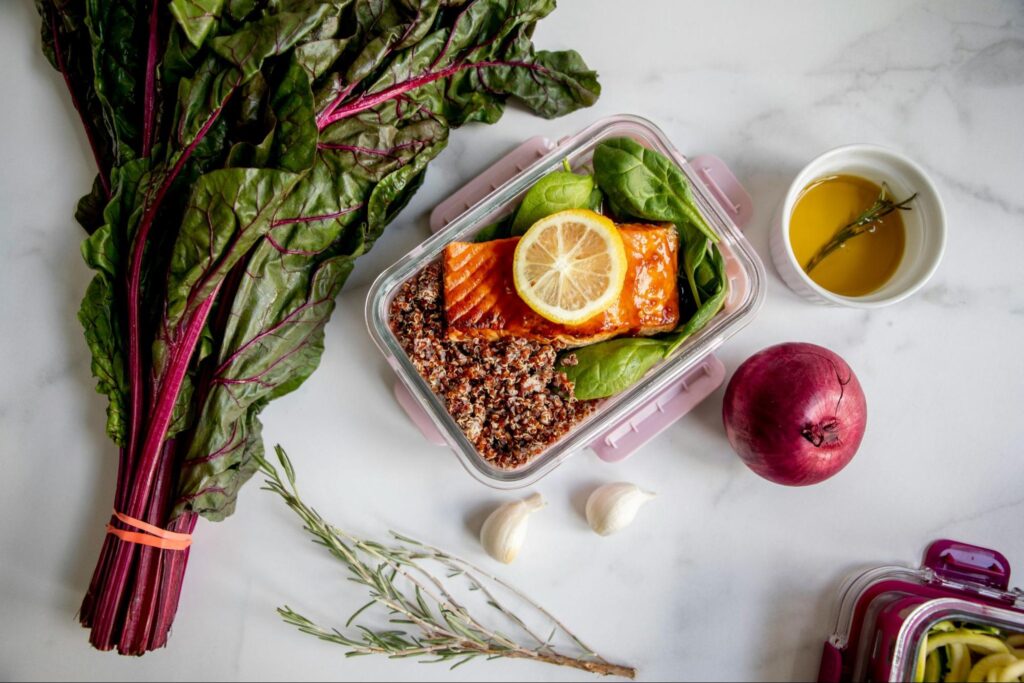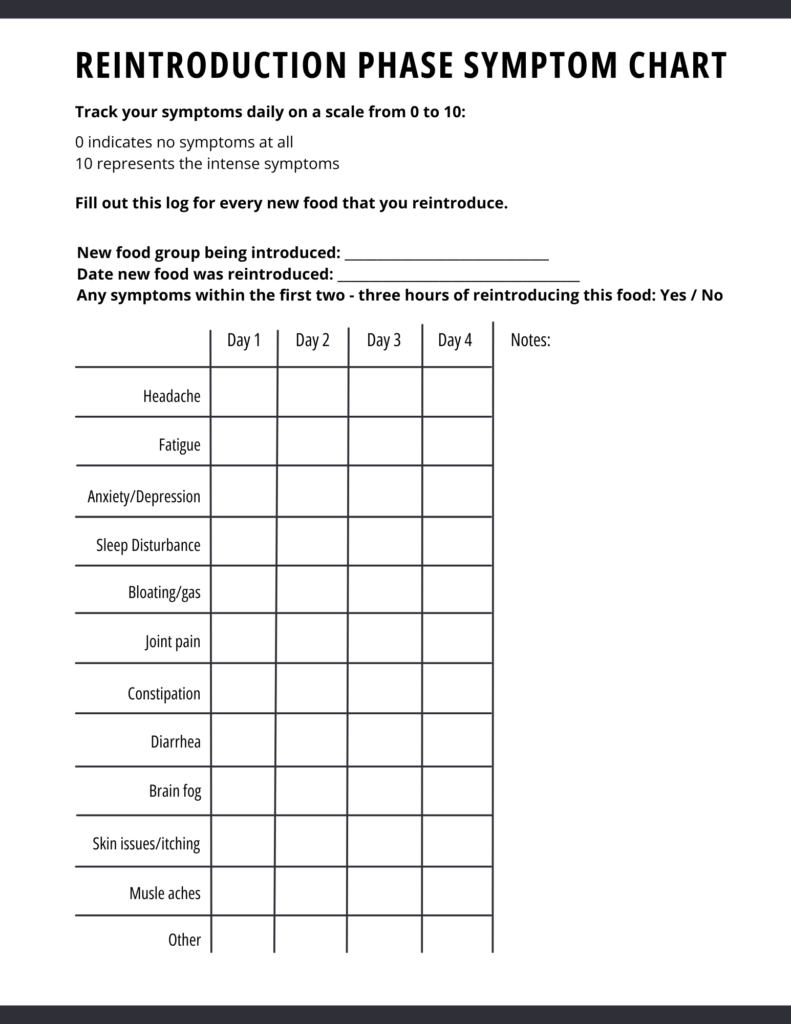At Rocky Mountain Flex, we hear our members talk a lot about training hard, dialing in their macros, and staying consistent. But what happens when you’re doing all of that—and still not feeling great or seeing the progress you want? If you’re dealing with things like inflammation, stubborn fat, digestive issues, unexplained bloating, or low energy, it might be time to look beyond just workouts and calories.
One simple but powerful tool that often gets overlooked is the elimination diet. A lot of people assume it’s only for those with food allergies or obvious intolerances—but it can actually help uncover how your body responds to everyday foods, even the ones you eat all the time.
If you’re focused on body composition goals and tracking your intake down to the gram, but still feel bloated, foggy, or stuck, this could be the piece you’ve been missing. Before we walk through how to do it, let’s take a look at a few key benefits.
5 Powerful Benefits of an Elimination Diet
1. Uncovers Hidden Food Sensitivities
You don’t need to break out in hives or have an obvious allergic reaction for food to cause issues. Digestive problems, bloating, fatigue, acne, mood swings, joint pain, and even stalled fat loss can all be symptoms of a mild but chronic food sensitivity. These reactions can trigger inflammation that keeps your body in a stressed-out state, making it harder to see the results you’re working for at RMFLEX.
What’s the difference between food allergies, sensitivities, and intolerances?
- Food Allergies
- Immediate immune response
- Can be severe or life-threatening
- Example: swelling, hives, difficulty breathing after eating peanuts or shellfish
- Food Sensitivities
- Delayed response (hours or days later)
- Often tied to immune and gut imbalances
- Example: bloating or fatigue after eating gluten
- Food Intolerances
- Caused by enzyme deficiency that doesn’t allow them to break down a certain food
- Primarily digestive symptoms (gas, cramps, etc.)
- Example: lactose intolerance
2. Can Help Clear Up Skin Issues
Skin flare-ups like acne, eczema, or redness can often be traced back to gut health and food sensitivities. Removing common culprits like dairy, gluten, or soy gives your body the chance to calm the immune system and reduce inflammation—often resulting in noticeably clearer skin in just a short time.
3. Supports Fat Loss
Inflammation and fat loss don’t go hand in hand. If your system is inflamed, it’s going to prioritize healing, not body recomposition. By cutting out foods that contribute to chronic inflammation—even ones that fit your macros—you allow your body to shift into a healthier, more responsive state.
4. Reduces Headaches and Migraines
Many people who suffer from frequent headaches find that food is a trigger. An elimination diet helps identify what’s causing the problem so you can fix it at the source, instead of relying on meds to mask the symptoms.
5. Starts the Gut Healing Process
A compromised gut—usually called “leaky gut”—can show up as bloating, fatigue, food intolerances, and even immune dysfunction. An elimination diet gives your digestive system a break from common irritants and supports the healing process. Removing potentially inflammatory foods is one of the most effective ways to rebuild gut integrity.

How the Elimination Diet Works:
Phase 1: Elimination
The first step of the elimination diet is, as the name suggests, all about removing foods that commonly cause inflammation, digestive distress, or immune responses. This phase typically lasts anywhere from 2 to 4 weeks, depending on how long it takes for symptoms to subside.
During this time, you’ll cut out the most likely culprits—foods such as gluten, dairy, soy, eggs, corn, peanuts, processed foods, seed oils, and more. When you eat foods that inflame your body day in and day out, it can make it hard to pinpoint the culprits of what is causing your unique issues.
The goal is to give your system a break. By eliminating these foods completely, you create a kind of “blank slate” so your body can calm down, reduce inflammation, and begin to heal. This allows you to more clearly see how food affects your mood, digestion, energy, and body composition once you start reintroducing foods later in phase 2.
Food to exclude during the elimination phase:
- Gluten and grains (wheat, bread, pasta)
- Corn (tortillas, corn chips, polenta)
- Dairy (butter, milk, cheese, whey, yogurt)
- Soy (edamame, tofu, soy sauce)
- Eggs
- Caffeine and alcohol
- Processed and packaged foods
- High-sugar foods
- Seed oils like canola, soybean, and vegetable oil
A more extensive elimination might include:
- Other possible irritants like tree nuts, peanuts, citrus (lemon, lime, orange and grapefruit), nightshades and FODMAPS
Instead, you’ll focus on nutrient-dense whole foods that are anti-inflammatory and supportive of your goals such as:
Protein: Choose grass-fed or organic meats such as beef, chicken breast, turkey breast, wild-caught fish, or a clean vegan protein powder such as pea protein powder
Vegetables (organic): Go for spinach, kale, lettuce, broccoli, cauliflower, brussel sprouts, carrots, onions, tomatoes, zucchini, yellow squash, cucumbers, bok choy, and raw fermented vegetables like sauerkraut, pickled carrots, purple cabbage, or kimchi
Carbohydrates: Use sweet potatoes, brown rice, gluten-free rolled oats, quinoa, squash, chickpea pasta, cassava, or plantains
Fruits: Organic blueberries, strawberries, raspberries, apples, and bananas
Fats & Oils: Extra virgin olive, coconut, and avocado oil, avocado
Nuts & Nut Butters: Choose raw almonds, pistachios, pecans, walnuts, Brazil nuts, almond butter, and sunflower butter
Dairy Alternatives: Unsweetened coconut, flax or almond milk
Sweeteners: Stevia, monk fruit, allulose
Tips for a successful elimination phase:
- Make a clear list of what food to eat and foods to avoid to prevent accidental slip-ups.
- Plan meals and snacks ahead of time to avoid grabbing something out of habit that could throw off your results. Meal prep will help you to stay on track with eliminating foods on the avoid list.
- Stick to whole, unprocessed foods in their most natural form. If you do eat any packaged foods, you will need to check the labels carefully for hidden ingredients such as soy, dairy, and gluten.
- Track how you feel daily—physically and mentally—to identify improvements or lingering symptoms.
Consistency is key. The more dialed in you are during this phase, the more accurate your results will be when you move on to reintroducing foods.
Phase 2: Reintroduction
Once you’ve completed the elimination phase and symptoms have improved, you’ll begin the reintroduction phase. This step is where you introduce eliminated foods one at a time to observe how your body reacts. It’s a crucial part of the process and gives you long-term insight into which foods fuel you—and which ones might be silently holding you back.
Here’s how it works:
- Choose one food group to reintroduce (such as dairy, gluten, soy, corn, or eggs).
- Eat that food in its purist form two times that day
- Then, go back to your full elimination diet for the next two days, giving your body time to respond.
- During this time, track your physical and emotional reactions in a journal or the printable symptoms tracker below. Look for signs like bloating, headaches, fatigue, skin issues, joint stiffness, or brain fog.
Repeat this process with each food group you removed—spacing them out enough to ensure you can identify any patterns. If a food causes a noticeable reaction, you’ll have the clarity to reduce or eliminate it moving forward. This gives you a clear picture of what foods fuel you and what foods throw you off.
Here’s an example of a reintroduction schedule:
Day 1: Reintroduce gluten at two meals
Day 2: Back to elimination diet
Day 3: Back to elimination diet
Day 4: Reintroduce dairy at two meals
Day 5: Back to elimination diet
Day 6: Back to elimination diet
Day 7: Reintroduce soy at two meals
Day 8: Back to elimination diet
Day 9: Back to elimination diet
Day 10: Reintroduce corn at two meals
Day 11: Back to elimination diet
Day 12: Back to elimination diet
Day 13: Reintroduce eggs at two meals
Day 14: Back to elimination diet
Day 15: Back to elimination diet
Day 16: Reintroduce peanuts at two meals
Day 17: Back to elimination diet
Day 18: Back to elimination diet
Day 19: Review your notes, symptoms, and overall findings
What to Do If a Food Triggers a Reaction
If you notice any symptoms after reintroducing a food, refer to the symptoms chart above to track and evaluate your response. If a food clearly triggers a negative reaction, stop eating it right away. You might want to avoid that food for at least 3 to 6 months to give your body a break and minimize discomfort.
After completing the main reintroduction phase, you can also test specific types of foods within a group—for example, you might find that while cow’s milk isn’t well tolerated, goat cheese or yogurt may be easier on your system.
Use the information you gather during this process to build a personalized eating plan. If you have questions or feel unsure about reintroducing certain foods, consider consulting with a qualified healthcare practitioner. They may also want you to do a food sensitivity test to accompany the elimination diet.
At RMFLEX, we’re committed to helping our Denver community get stronger, leaner, and healthier for the long haul. An elimination diet isn’t about restriction—it’s about information. The more you know about how your body responds to food, the better decisions you can make about what to eat moving forward. Whether you’re trying to lose fat, build muscle, or just feel better in your body, this is a tool worth exploring.


















